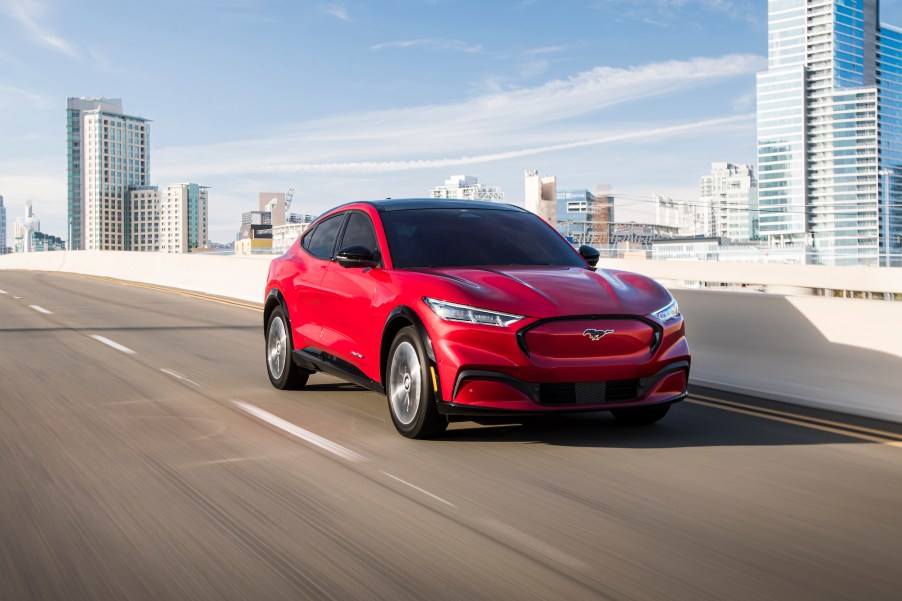
A Ford Mustang Mach-E Owner’s Range Anxiety Turned to Panic When He Couldn’t Find a Charging Station on a Busy Route
Nearly everyone who’s ever driven a car has worried about running out of fuel. At the moment, it’s much easier to refuel a gas-powered car than an EV. Gas stations abound, while electric chargers are still few and far between. Despite EVs’ detractors, Tesla has put a lot of work into establishing a charging station network that any electric car can use. But the future didn’t arrive soon enough for one Ford Mustang Mach-E driver in the Northeast.
This Ford Mustang Mach-E driver’s range anxiety took a turn for the worse

Similar to the feeling of running out of gas, range anxiety can set in when an EV driver realizes the vehicle’s charge is approaching zero and there’s no charging station in sight. The 2021 Ford Mustang Mach-E is an all-electric vehicle. And if the next charging station isn’t within the vehicle’s range, the situation can cause anxiety.
Such was the case for writer Dan Primack. He expected to arrive at his destination without recharging on a busy route from Boston to New York City. He reported for Axios about his struggle to find a charging station along Interstate 95. At the first rest stop (charge level 30%), Primack couldn’t locate any non-Tesla chargers. At two more rest stops (26% and 23%), Primack couldn’t charge and wound up visiting a nearby parking garage to refuel his Mach-E.
And upon arriving in NYC, he found that the charging spot he had reserved wasn’t working, and he’d have to recharge his Mach-E at the same place on his way back to Boston.
How can EV drivers avoid range anxiety?
Primack set out on a 200-mile journey with 215 miles of range on his Ford Mustang Mach-E — a recipe for disaster if a single inconvenience arose. Planning to travel on I-95, notorious for constant construction, should have set off some alarm bells. But Primack planned to visit rest stops, even if they didn’t pan out.
“EV owners not only need to plan but also need backup plans when the original ones fall through. At least for now,” he noted at the end of his harrowing story.
A trip of that distance on a similar charge level is ambitious, but the rest stops along Primack’s route advertised EV chargers. Until electric cars double in range, charging stations will be a significant concern for any trip longer than a couple of hours.
But in a Tesla EV, you’ll likely encounter at least one charging station no matter where you go. The company has already installed over 25,000 Superchargers along major highways in every contiguous U.S. state.
Expanding Tesla Superchargers to non-Tesla EVs
But for non-Tesla vehicles, such as the Ford Mustang Mach-E, the situation is more complex. Tesla CEO Elon Musk recently announced on Twitter that Tesla would open its Superchargers to non-Tesla vehicles later this year.
Reactions from Tesla owners on Twitter were mostly negative because they felt their EV purchases helped build the Superchargers, and they didn’t want to share them. But for Tesla, expanding the availability makes sense because the company can collect recharging fees from the rest of the EV market.
Tesla has already set the benchmark for other EV manufacturers with the Supercharger network, and it appears Musk’s automaker will do it again soon with the redesigned Model S. Boasting a range of over 500 miles, the new model will reduce range anxiety significantly. Even if the Model S didn’t have access to Superchargers, finding a station within eight or nine hours of driving would be trivial.


